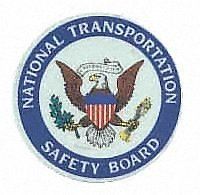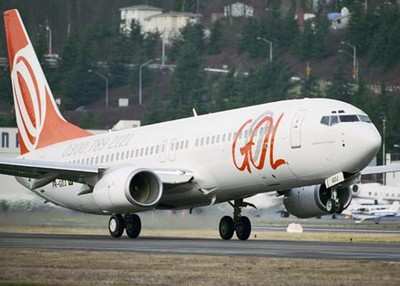Thu, May 03, 2007
Board Says "Critical Safety Issue" Exists With TCAS
 In response to last year's midair
collision over Brazil involving a private Embraer Legacy 600
business jet, and a Gol Airlines 737, on Wednesday the National
Transportation Safety Board issued three safety recommendations
geared at solving what the Board calls a "critical safety issue"
when traffic collision avoidance systems (TCAS) fail, without the
flight crew's knowledge.
In response to last year's midair
collision over Brazil involving a private Embraer Legacy 600
business jet, and a Gol Airlines 737, on Wednesday the National
Transportation Safety Board issued three safety recommendations
geared at solving what the Board calls a "critical safety issue"
when traffic collision avoidance systems (TCAS) fail, without the
flight crew's knowledge.
As Aero-News reported, Gol
Airlines flight 1907 plunged into a thickly-jungled region
September 30, about 18 miles from Peixoto de Azevedo, Brazil. All
154 persons onboard the 737-800 were killed; the pilots of the
Embraer were able to make an emergency landing following the
collision.
The NTSB noted the bizjet's transponder was not being received
by ATC radar prior to the collision... and such a failure could
have compromised safety alerts in the cockpits of both
aircraft.
"The investigation of this accident is ongoing," the NTSB states
in its report, "however, preliminary findings suggest that a
critical safety issue exists regarding the loss of functionality of
an aircraft’s collision avoidance system (comprising a
transponder and a traffic alert and collision avoidance system
[TCAS] and resulting cockpit warnings to flight crews. Flight data
recorder (FDR) and cockpit voice recorder (CVR) information from
both airplanes revealed no indication of any TCAS alert on board
either airplane (both airplanes were equipped with mode S
transponders and TCAS II computer units), no evidence of
pre-collision visual acquisition by either flight crew, and no
evidence of evasive action by either crew."

To address the possibility a failed or inoperable transponder
may compromise TCAS warnings, the NTSB issued the following
recommendations:
- Require, for all aircraft required to have a traffic alert and
collision avoidance system installed and for existing and future
system designs, that the airborne loss of collision avoidance
system functionality, for any reason, provide an enhanced aural and
visual warning requiring pilot acknowledgment. (A-07-35)
- Evaluate the feasibility of providing enhanced aural and visual
warnings for future systems that may provide ground collision
avoidance functionality. If feasible, require that future design
criteria include such warning functionality. (A-07-36)
- Inform all pilots who use transponders or transponder/traffic
alert and collision avoidance system (TCAS) units about the
circumstances of this accident and the lack of a conspicuous
warning to indicate the loss of collision protection resulting from
a compromise in functionality of either the transponder or TCAS
unit and ask all pilots who use transponders or transponder/TCAS
units to become familiar with the annunciations currently used to
indicate failure or lack of active functionality of these
components. (A-07-37)
More News
LinxUs System Adds Capabilities for Data-Driven Operators Textron Aviation announced another option for operators processing their post-flight data, adding interoperability with GE>[...]
Aero Linx: The de Havilland Moth Club Ltd The de Havilland Moth Club evolved from a belief that an association of owners and operators of Moth aeroplanes should be formed to create>[...]
(Pilot) Inadvertently Applied Excessive Braking Action, And The Airplane Nosed Over Analysis: The pilot reported that, while landing at a remote, rough and uneven airstrip in a tai>[...]
“MCADT is committed to rapidly integrating armed first-person view drones into the FMF, enhancing small-unit lethality and providing organic capabilities that warfighters cur>[...]
From 2017 (YouTube Edition): Major Engine Supplier Joins Forces With Small Aircraft Manufacturer… GE recently made an agreement with Venom Aircraft to supply engines for the>[...]
 Citation Operators Get Another Flight Data Connection for QA
Citation Operators Get Another Flight Data Connection for QA ANN's Daily Aero-Linx (06.01.25)
ANN's Daily Aero-Linx (06.01.25) NTSB Final Report: Bellanca 8GCBC
NTSB Final Report: Bellanca 8GCBC Aero-News: Quote of the Day (06.01.25)
Aero-News: Quote of the Day (06.01.25) Classic Aero-TV: High-Speed Match-up - Venom and GE Rebirth A Legend
Classic Aero-TV: High-Speed Match-up - Venom and GE Rebirth A Legend




